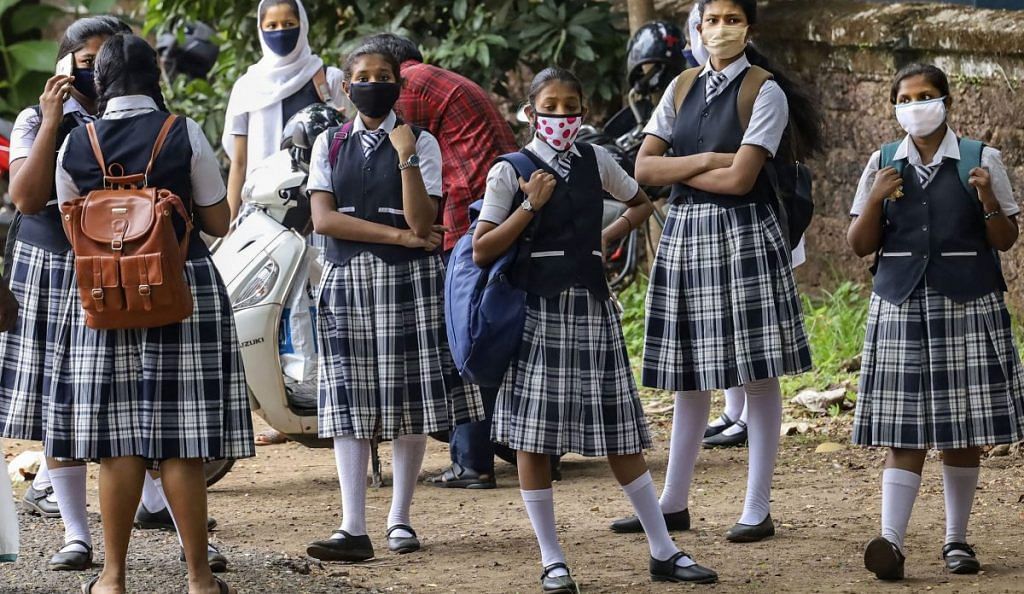The winding down of the national lockdown in India and the devolution of coronavirus pandemic management to the states will change daily life as we have known it for the past few months. While the reopening of the economy is rightly the subject of public interest, the reopening of schools and educational institutions will require greater attention in the coming weeks. The lockdown was less disruptive than it might otherwise have been because it came at the tail end of the academic year in many states and students spent the better part of the period at home. But now the questions of if, when and how to reopen schools and colleges can no longer be put on the back burner. How should state governments proceed?
From the public health perspective, there are two principal considerations: protecting children and their families from the disease and preventing transmission through school children. The fact that the disease is relatively milder and less lethal among younger people suggests that children are at a lower risk. However, the asymptomatic nature of the transmission means the disease could spread to others through them. It is presumably harder to ensure hand hygiene, masks and social distancing among children and teenagers. Since schools and colleges are effectively social hubs, they can also become hubs of disease transmission. While early studies from other countries suggest that transmission through school children might be limited, it’s unclear if the results apply to Indian contexts, and a prudent, cautious approach is warranted.
Also read: ‘Playing with fire’: Parents oppose Modi govt suggestion to reopen schools from July
The online class conundrum
For the most part, classes can be effectively delivered online. In an upcoming survey report covering students from several countries, Takshashila’s teenage interns Ada Pai, Myesha Phukan and Joesh Nayak find that for a majority of the respondents, both classes and extracurricular activities have moved online. However, most of those surveyed preferred physical classes, which is understandable, because schools perform an important social function. The initial experience of private schools in Bengaluru that have introduced online classes supports the view that this medium is workable from secondary school onwards.
At the kindergarten and primary school level, outcomes are far more dependent on the proximity of the teacher. A large part of a teacher’s role is to get the children to sit down and pay attention to what is being taught. Here, online classes will not work too well. So too at the uppermost end of school, where there are laboratory and project work requirements. Satisfactory solutions to both these problems need to be found.
Also read: How Modi govt plans to reopen schools once lockdown is lifted
Time for TV
The fundamental problem, though, is that online classes are iniquitous — very few families can afford devices and internet connections — and thus cannot form the basis for reopening schools. A better answer, as the Karnataka government is contemplating, is television. Almost 70 per cent of the national population has access to television. In the Southern states, television reach is over 90 per cent. There are a number of existing private regional channels effectively broadcasting junk in between advertisements; and the Doordarshan platform has some capacity. There is also no shortage of satellite transponders available from Indian and foreign providers, and these are fairly inexpensive.
Thus, a state-wide school system can be run on television with one channel per grade at a time. If two grades time-share a channel, the requirement is for six channels for 10 hours a day. It doesn’t need a lot of teachers or equipment — just broadcast the best teachers in the state conducting classes in a studio. These classes can also be streamed online. The television channels can raise revenues through advertisements, besides being able to broadcast commercial content during the evening peak hours. Given how little it would cost, television-based school education is ideal for cash-strapped state governments. In some places, it might do better than physical schools that suffer from poor teacher quality and absenteeism.
Also read: Govt plans ‘tech-savvy’ additions to National Education Policy to adapt it to Covid reality
Don’t ring the bell yet
Of course, television does not offer satisfactory solutions for attendance, test assessments and annual examinations. These will have to be made the responsibility of the families and the students. Public campaigns can help. We might even see adults benefiting from these programmes. Other than board exams, all others can be the parents’ responsibility. This can come as a culture shock for many families, where scoring marks by hook or crook is seen as the objective. Cheating makes little sense if the only person you are cheating is yourself.
What is harder to replace will be the mid-day meal served at government schools. The risk of malnourishment of vulnerable children is real, even in urban and higher-income states. State governments and their NGO partners will need to restructure their mid-day meal schemes and work out new ways to ensure that the meal reaches the child.
When should schools physically reopen? The best answer is: not yet. Where and when there is reasonable confidence that the spread has been contained, a gradual, staggered reopening can be considered. But let’s not forget that there can be second and subsequent waves, with possible local containments and state-wide lockdowns. To avoid subjecting children to more anxieties and uncertainties, state governments must factor in repeated disruptions. That is why a robust television-plus-technology system is necessary. Whether or not the school reopens, secondary school mathematics will be on Channel 64!
The author is the director of the Takshashila Institution, an independent centre for research and education in public policy. Views are personal.
